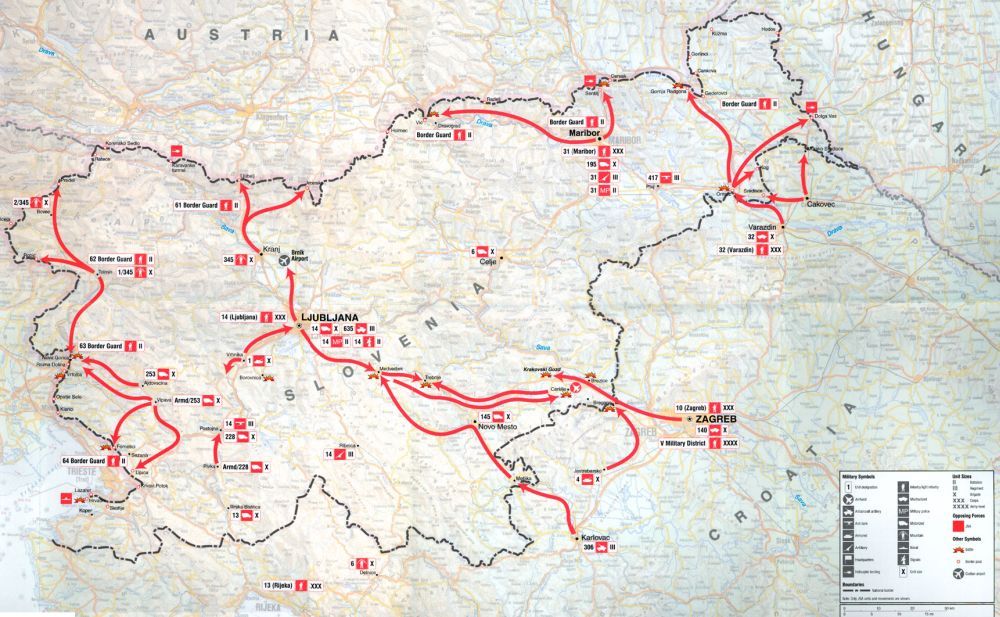June 27, 2019
On June 27, 1991, at 01:15, the Anti-Aircraft Regiment based in Karlovac, Croatia, crossed the Slovenian border and at 02:40 a column of tanks left the barracks in Vrhnika, heading for the airport at Brnik. At 14:30 the first shot was fired by an officer of the Yugoslav Army in Divača, beginning the ten-day military conflict between Slovenian Territorial Defence (Territorialna Obramba) and the Yugoslav People's Army (Jugoslovanska ljudska armada), which followed Slovenia’s declaration of independence on June 25. The conflict is hence also known as the Ten-Day War, or the Slovenian Independence War (Slovenska osamosvojitvena vojna).
A significant number of the YPA soldiers consisted of mandatory servicemen from all parts of Yugoslavia, while Slovenian sovereign troops consisted of the local police and Territorial Defence (TD), which was established in 1968 as the federation’s response to Soviet invasion of Czechoslovakia: in case of the YPA’s defeat and eventual invasion, the TD would continue resistance against the occupying Soviet forces.
Ironically, the TD eventually clashed with the YPA in the Slovenian fight for independence.
After Tito's death in 1980, the YPA became an important decision-maker at the centre of political power in Belgrade, while the country started to crumble under both increasing economic pressure and the various competing nationalisms.
Of course, the Slovenian TD was no match for the Yugoslav army, who eventually abandoned its pan-Yugoslavism in favour of a Serbian nationalism that saw little benefit in carrying out a total bombardment of a place outside the planned borders of Greater Serbia. Nevertheless, the army did seem surprised by the scope of popular resistance in the first several days of the conflict.
On 26 of December, 1990 a plebiscite was held in Slovenia, where 88.5% of all voters (94.8% of those participating), expressed their preference for Slovenia to become an independent sovereign state.
On June 25, 1991 Slovenia’s independence was declared and Yugoslavian signs and flags were removed at the border crossings and replaced with Slovenian ones.
Change of flags at the Republic Square, Ljubljana, June 25, 1991:
The federal executive council met the same night in Belgrade, adopting a decision about the “protection of the federal borders in Slovenia”, which granted a legal support for the military intervention in the republic. The operation’s first goal was to gain control over the border crossings and Brnik international airport (near Ljubljana).

On its way to their final destinations, the Yugoslav Army encountered unarmed barricades and spontaneous, sometimes very determined reaction of the civilians.
Documentation of the events that took place at the border crossing in Gornja Radgona (the eastern border crossing with Austria):
The events that took place by Trzin, where tanks headed from Vrhnika to Brnik airport were stopped:
Rožna dolina border crossing (the border with Italy, Nova Gorica):
The ten-day war ended on 7 July, 1991, when Brioni Accords were signed. Altogether 76 people lost their lives, among them 12 foreign citizens, and 326 people were wounded. The last YPA soldiers left Slovenia on 25 of October 1991.






